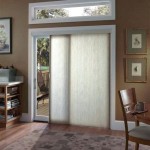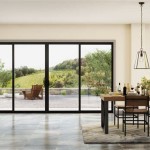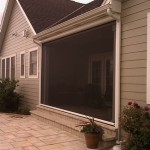Patio Furniture Paint Ideas: Revitalizing Your Outdoor Space
Patio furniture, exposed to the elements, inevitably shows signs of wear and tear. Paint, therefore, becomes a crucial tool in extending its lifespan and enhancing the aesthetic appeal of outdoor living areas. Choosing the right paint and color scheme can transform weathered pieces into vibrant focal points. This article discusses various patio furniture paint ideas, encompassing preparation techniques, paint selection, and design inspiration.
The selection of appropriate paint is paramount to the success of any patio furniture renovation project. The type of material the furniture is made from will dictate the most suitable paint formulation. Considerations such as weather resistance, UV protection, and durability are critical for ensuring a long-lasting and visually appealing finish.
Preparation: The Foundation for a Flawless Finish
Prior to applying any paint, meticulous preparation of the furniture’s surface is indispensable. This process typically involves cleaning, sanding, and priming, each step contributing to optimal paint adhesion and a superior final result. Neglecting proper preparation can lead to premature peeling, cracking, or blistering of the paint, ultimately diminishing the project's longevity and necessitating further repairs.
The initial step is thorough cleaning. Remove any dirt, debris, mildew, or loose paint using a stiff brush, soap, and water. For stubborn stains or mildew, a solution of diluted bleach can be employed, ensuring to rinse thoroughly and allow the furniture to dry completely. Power washing can expedite this process, but caution must be exercised to avoid damaging delicate materials. Aluminum and wicker furniture may require a gentler approach to avoid causing indentations or loosening the weaves.
Sanding is the next crucial step, creating a slightly roughened surface to which the paint can effectively adhere. The grade of sandpaper required will vary depending on the existing finish and the type of material being sanded. For smooth surfaces, a finer grit sandpaper (around 220-grit) is generally sufficient. For removing rust or old, peeling paint, a coarser grit sandpaper (around 80-120-grit) may be necessary. Always sand in the direction of the grain, if applicable, and ensure to remove all sanding dust with a tack cloth or damp cloth before proceeding to the next step.
Priming is particularly important for raw wood, metal prone to rusting, or when changing the paint color significantly. Primer creates a uniform surface and enhances paint adhesion, preventing the underlying material from bleeding through and affecting the final color. Choose a primer specifically formulated for the material of your patio furniture (e.g., metal primer for metal furniture, wood primer for wood furniture). Apply the primer in thin, even coats, allowing it to dry completely according to the manufacturer's instructions before applying the topcoat.
Paint Selection: Matching the Medium to the Material
The ideal paint type for patio furniture is contingent upon the material of the furniture itself. Options range from acrylic latex paints suitable for wood and wicker to specialized metal paints designed to inhibit rust and provide durable protection. Understanding the properties of each paint type and its compatibility with the underlying material is crucial for achieving a long-lasting and aesthetically pleasing finish.
For wood furniture, exterior-grade acrylic latex paint is a common and versatile choice. These paints offer good weather resistance, durability, and color retention. They are also relatively easy to apply and clean up. Opt for paints that contain UV protectants to prevent fading and cracking from prolonged exposure to sunlight. Alkyd paints, while durable, tend to yellow over time and are not as environmentally friendly as latex alternatives.
Metal furniture requires paints specifically formulated to prevent rust and corrosion. Rust-oleum and other similar brands offer a variety of metal paints designed for outdoor use. These paints often contain rust inhibitors and provide a durable, chip-resistant finish. Consider using a self-etching primer for bare metal to further enhance paint adhesion and prevent rust formation. Powder coating, while more expensive, provides an extremely durable and long-lasting finish for metal furniture.
Wicker and resin wicker furniture can be painted with acrylic latex paint or specialized spray paints designed for plastic surfaces. Ensure the paint is flexible enough to accommodate the natural movement of the wicker and prevent cracking. Apply thin, even coats to avoid clogging the intricate weave of the wicker. Spray paint is often preferred for wicker furniture, as it allows for better coverage in hard-to-reach areas.
For plastic furniture, adhesion can be a challenge. Specialized paints formulated for plastic surfaces are essential. These paints often contain bonding agents that promote adhesion and prevent the paint from peeling or flaking off. Thorough cleaning and sanding are particularly important for plastic furniture to ensure proper paint adhesion.
Design Inspiration: Color Palettes and Creative Techniques
Choosing the right color palette can dramatically transform the look and feel of a patio space. Consider the existing colors of your outdoor decor, landscaping, and surrounding architecture when selecting paint colors for your furniture. Experiment with different painting techniques to add visual interest and personality to your outdoor space.
Neutral color palettes, such as shades of gray, beige, and white, create a calming and sophisticated atmosphere. These colors are versatile and can easily be paired with pops of color through cushions, pillows, and accessories. Neutral furniture also blends seamlessly with natural surroundings, creating a cohesive and harmonious outdoor space.
Bold and vibrant colors, such as turquoise, coral, and yellow, can add energy and personality to a patio. These colors are particularly suitable for smaller patios or balconies, where they can create a focal point and brighten up the space. Consider using bold colors sparingly, as accents, to avoid overwhelming the overall design.
Two-tone painting techniques can add visual interest and depth to patio furniture. Consider painting the frame of a chair or table one color and the slats or cushions another. This technique can be particularly effective for highlighting architectural details or creating a more modern look. Stenciling is a creative way to add patterns and designs to patio furniture. Use stencils to create geometric patterns, floral motifs, or personalized designs. Stenciling can be done with paint or stain, depending on the desired effect.
Distressing techniques can give patio furniture a rustic and weathered look. This can be achieved by sanding down the paint in certain areas to reveal the wood underneath or by using specialized distressing products. Distressed furniture adds character and charm to an outdoor space and complements a variety of design styles, from farmhouse to bohemian.
Color blocking involves painting different sections of furniture in contrasting colors. This technique creates a bold and modern look and can be used to highlight specific features of the furniture. Color blocking is particularly effective for geometric furniture designs and can be customized to match any color palette.
Beyond solid colors, consider experimenting with finishes. A glossy finish will reflect more light and create a more modern, polished look. A matte finish will absorb more light and create a more subdued, natural look. Semi-gloss finishes offer a balance between durability and aesthetics and are a popular choice for outdoor furniture.
Ultimately, the choice of paint color and technique is a matter of personal preference. Consider experimenting with different options and creating a mood board to visualize how the painted furniture will look in your outdoor space. Prioritize durability and weather resistance to ensure that your painted furniture will withstand the elements and provide years of enjoyment.
Consider the overall architectural style of the home when selecting colors. Matching the furniture to the home's style creates cohesion and a unified aesthetic. For example, a modern home might benefit from sleek, minimalist furniture in neutral tones, while a Victorian home could accommodate more ornate furniture with elaborate detailing and richer colors.
Don't be afraid to experiment and create a unique and personalized outdoor space. With careful planning and attention to detail, painting patio furniture can be a rewarding and cost-effective way to transform your outdoor living area.

Rainbow Wooden Outdoor Patio Furniture Makeover With Spray Paint Mimosas Motherhood

Awesome Spray Paint Colors Patio Furniture Makeover Painting Wrought Iron

Blue And White Patio Ideas Green With Decor

Get A Durable Finish For Outdoor Furniture Painted Wood

Painting Outdoor Furniture For A Beautiful Quick Update

How To Paint Metal Patio Furniture Green With Decor

12 Outdoor Furniture Makeovers Easier Than You Think

26 Wrought Iron Makeovers Ideas Patio Furniture Makeover

34 Spray Paint Crafts And Projects For The Home Joyful Derivatives

How To Paint Metal Patio Furniture So It Looks Like A Million Bucks
Related Posts








